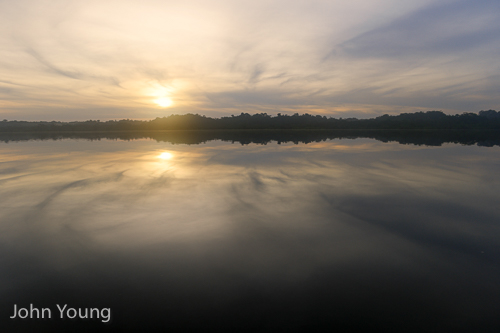I had read about the train ride on El Nariz del Diablo (the Devil's Nose) and this was on my bucket list for Ecuador. When the railway was constructed in the early 20th c., they met a seemingly impassable nearly-vertical wall of rock. The ingenious engineering solution was to carve a series of tight zig-zags out of the rock, which allowed the train to climb 800m by going forwards and then backwards up the tracks, as you'll see in my images.
I arrived in Alausí, the terminus for the Devil's Nose, on Thursday evening, and had planned on taking a ride on the train on Monday morning, after my hike on El Camino del Inca. I was disappointed, then, when Victor, the hostel owner, told me that the train didn't run on Mondays. He said, however, that I could hike it, probably in 5-6 hours.
I arrived back from my hike on the Inca Trail on Saturday evening, a day earlier than anticipated, and asked Victor if it was safe to walk the tracks if the trains were running. He said sure, there's usually lots of space, the bridges are short, and you can hear the train coming from a long ways off. He gave me directions for the route, and I decided to do the hike on Sunday, before heading to Quito on Monday.
 |
I hiked over trails and dirt roads to the poor pueblo of Nizam, and then down
dirt roads and trails to Sibambe, where the train station is. I then hiked the 12k
along the train tracks (not shown on map) back to Alausi. |
 |
I started out at 7 a.m., and before long I was walking along this dirt trail.
It was barren for the first while, but before long beautiful flowers appeared along the side. |
 |
| Cacti, in Ecuador! |
 |
| And colourful insects, too! |
 |
It was quiet for the first hour or so, and quite barren, and then the locals appeared herding animals along the way.
The photos ops just kept coming! |

 |
| And then I reached the pueblo of Nizam. Not everyone was happy to have their picture taken. |
 |
After going through Nizam I took the trail down to the train station.
 |
| I liked this lady's tool on her back. |
|
 |
| More beautiful flowers along this route. |

 |
And grapes.
|
 |
The people tie their animals up along the side of the road for the day, and come
back for them later. |
 |
Felt like I was walking through a corral here.
|
 |
This young lady posed for a picture.
Then the route became drier and more barren

This is Ecuador?! |
 |
People working the field down below.
|
 |
| After a long downhill, I finally reached the train station about 11:15, feeling exhausted. I enjoyed a cold juice, fruit salad, and cafe con leche, and after learning that it was a 12k walk back to Alausí along the tracks, I asked if I could buy a ticket, but was told no. |
 |
I set out about noon, and after about 40 minutes I was above the station and could see people looking up at me.
|
 |
After about another 1/2 hour, I came to this sign. Too late for me, I wasn't turning back now.
I didn't think I'd be lucky enough to be in the right place at the right time to get a shot of the train coming to the switch-back, but I was! |
 |
You can see the brakeman switching the tracks before the train goes in reverse.
|
 |
And the train continues on its way, zigzagging up the mountain.
I was worried about being caught in a narrow spot, but, not worries, as I could hear
the train from a long ways off, and it moved slowly. I was able to get into a good vantage
point both times it passed me.

The train approaching me the first time. I snapped several shots on a high shutter speed. |
 |
After it passed, I thought I should have had a slower shutter speed to show movement.

I wondered what the passengers thought of this madman on the side of the tracks.
I didn't think the train would pass me again, so I was surprised when I heard its whistle. So this time I tried panning, and I like the effect better.

 |
 |
After the excitement of the train passing by, I walked and walked, and could finally see Alusí in the distance.
 |
Here I am, near the end of the track, and near the end of my tether--eight hours after I set out....


















































